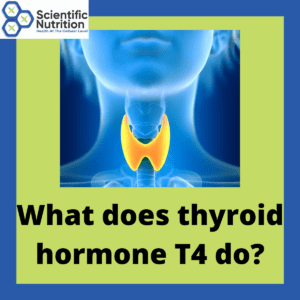Are you aware of the effects toxic chemical imbalance may have on your behavior daily?
If you have a biochemical toxic imbalance it can push you to behave in ways that are not natural to your personality or disposition. We are made up of minerals that not only control our physical functions but may also play a role in our behavior and mental status. Here are some examples of traits triggered by specific minerals and heavy metals at varying levels.
Mineral Low Normal High
Copper Surrendering Loving Angry, emotional, depressed
Iron Weak Strong Hostile, angry, resentful
Lead Mental Retardation, hyperactivity
Mercury Nervousness, psychosis
Aluminum Memory loss, dementia
Calcium Gullible Stable Stubborn, rigid
Zinc Meek, effeminate Loyal Martyr-type personality
Manganese Non-assertive Assertive Rigid
Magnesium Weak Flexible Depressed
Sodium Introverted Extroverted Volatile
Sodium/Potassium Indecisive, hostile Follow through Aggressive
………………………….. resentful, frustrated
These are just some of the important association that have been established between minerals and emotions. Knowing the connections can make it easier to assess or recognize patterns without physically seeing a person and using the Hair Analysis test results. Allow me to break down one of the most common offenders, copper.
What are the effects of toxic copper imbalance?
Copper toxicity is the most common heavy metal toxicity I see on Hair Analysis results. Copper correlates well with estrogen levels and is essential for a proper functioning female reproductive system. The “feminine” traits such as intuitiveness and gentleness are associated with adequate tissue copper being available in the right form (not bio-unavailable or oxidized).
In excess, copper will stimulate the primitive animal brain (diencephalon) and stimulate sympathetic neurotransmitters which enhance emotions. It also displaces Zinc from critical metalloenzymes, leading to many physical and emotional symptoms.
An elevated tissue copper level is related to exaggerated emotional states. There is frequently excessive brain activity, insomnia, ADHD, and an intellectual compensation for an inability to properly handle stress or fears. These individuals will often comment that their brain is hyperactive but the body is exhausted because it reduces adrenal and thyroid gland activity causing fatigue, lethargy, and exhaustion.
Elevated copper levels are reflective of one whose “head is in the clouds” or “stuck in their head” where the energy is somewhat trapped. Copper also enhances Calcium levels that may trigger depression, detached behavior, or schizophrenia.
I have seen the results of reversing schizophrenia with a young client (male) years ago where he stated an evil voice disappeared once the copper was removed. These toxic imbalances need to be removed for one to feel better and to improve symptoms at the least.
How do I know if I have copper toxicity?
Not all individuals with high Copper levels suffer from the symptoms because if one also has a high Zinc level, it will soften or modulate the symptoms as they antagonize each other. A hidden Copper toxicity is often reflective of a slow metabolism also known as your oxidation rate. Copper toxicity can be assumed when the tissue Calcium levels found on the Hair Analysis are at a high level or relative to Magnesium.
What minerals can cause a toxic imbalance?
The first 3 I’d like to break down are your natural calming minerals:
Calcium depresses the nervous system activity as a calming agent along with Magnesium and Zinc. Calcium also lowers potassium frequently causing hypoglycemia or low blood sugar.
Magnesium has a sedative effect upon the nervous system. This is particularly useful with hibernating animals when it is very high to keep them at rest with slower metabolism for long periods of time. An excessive amount of Magnesium is linked to fatigue, depression, and emotional numbness. Whereas a Magnesium deficiency contributes toward belligerency, and high strung behavior.
Zinc stimulates the cortical brain or “new brain” which is responsible for rational thought and the “higher emotions”. At the same time Zinc in optimal quantities suppresses the “primitive brain” or animal brain. It is also known as the masculine element which balances copper (the dominant feminine element) in the body. A severe deficiency is frequently associated with effeminate traits while an excessive Zinc is associated with a diminished or dull emotional response.
Other minerals causes of toxic imbalance
Sodium is directly related to your Aldosterone hormone coming from the adrenals. A low Sodium level is indicative of low Aldosterone levels, a state linked with fatigue, depression and a Sodium to Potassium inversion. An elevated Sodium level indicates excessive adrenal activity is associated with emotional volatility.
Potassium is known as the “follow through” hormone associated with an adrenal Glucocorticoid hormone most know as cortisone. Cortisone is a longer-term or responsive adrenal hormone. Excessive Potassium in relation to Sodium is associated with indecision. The lower the ratio drops, the less personality characteristics such as frustration, hostility, and resentment show up.
Manganese is essential for energy production. Excessive amounts accumulate in the brain where it can contribute to rigidity and one type of schizophrenia. Deficiency of this mineral in animals is associated with a lack of maternal behavior or instinct. We refer to it as our mothering mineral.
Iron accumulates in the amygdala of the brain, a site associated with aggressiveness. This may explain the association between elevated iron and anger, hostility, and resentment. Iron is required for energy production and oxygen transport. A low iron level is frequently associated with weakness because it oxidizes making it bio-unavailable for body functions.
The most important ratio that affects your overall health?
Sodium to Potassium ratio or Na/K is your life energy indicator among other things. A potassium deficiency (too high or too low of a level) in relation to Sodium is associated with starting but not finishing projects. An adequate level has been linked with those who finish what they begin.
The levels as well as many ratios on a Hair Mineral Analysis Test can show you many answers to physical and emotional associations. If you are at either end of the levels, you may feel ill or just not yourself. This is where we can reverse engineer your symptoms with returning the balance of minerals and detoxification of disrupting heavy metals.
If you would like to dig deeper into balancing your biochemistry minerals, detoxify harmful heavy metals, and build your immune system,
LET’S CHAT about your health goals!
Also see 12 Things Hair Analysis can reveal about your health to learn more.
Copyright Scientific Nutrition, LLC 2021




